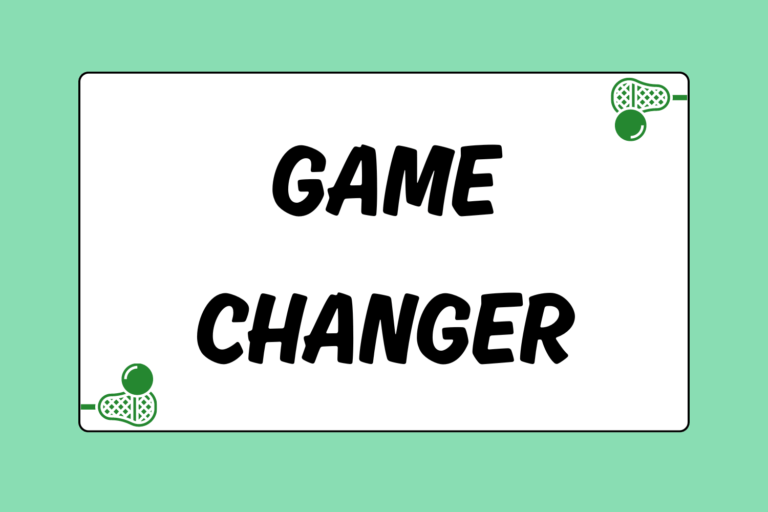Yes, your son did just get whacked with a titanium stick. Yes, that’s legal in this game. No, you can’t run down on the field and give him a piece of your mind! Watching your child play lacrosse for the first time can be a confusing or even scary experience if you don’t know what to expect going in. The game is very fast and there is a lot of rough, physical contact in ways that may get your child in big trouble if performed anywhere off the field. If you’re used to watching soccer or baseball, then this will be a totally different fan and viewing experience. Get ready for a fast-paced, high scoring and hard hitting game.
Physical Contact
One of the most glaring differences between lacrosse and some other team sports is the physicality and hard-hitting nature of the game. Parents who’ve never seen a game are often taken aback at how many actions players can get away with on the field that may land them in jail on the streets.
Lacrosse players wear all those pads for a reason! Players are well-protected from injury in most instances. The injury risk is lower than in football, where players take tons of physical abuse on nearly every play. The beatings in lacrosse are pretty limited as far as when and where they can happen. Only players in possession of the ball or within five yards of a loose ball may be stick or body checked. Body contact is illegal if it takes place from behind, above the neck or below the waist.
Face cages are standard on lacrosse helmets, so no matter how tough a player thinks he is (looking at you, hockey players), he will be protected against losing teeth or breaking his jaw.
Mouth guards are mandatory in lacrosse. Penalties are assessed to players who fail to wear proper protection for their teeth. In addition to protecting a player’s teeth, a mouth guard also helps to prevent concussions, one of the most serious injury concerns in contact sports.
Referees check to make sure all players are wearing properly functioning equipment before each game.
Similarities to Other Sports
Because of its similarities to other sports, lacrosse is pretty easy to follow for a newcomer to the game. There aren’t many slow periods or breaks in the action, and a faceoff happens right in the middle of the field after every goal is scored and at the begging of each quarter – just like hockey.
Team offensive and defensive strategy is very similar to basketball. While the field is bigger in lacrosse, with wider sidelines and space behind the goal area for players to occupy, the teams set up offense by spacing the field and looking to cut off-ball to get open for passes. While this is happening, the team with the ball will move it around the perimeter until something opens up inside or a player is able to beat his defender with a dodge to the goal.
One-on-one defense is very similar to basketball, with defenders utilizing quick feet to stay in front of opponents. In lacrosse however, physical contact with an offensive player is allowed and defenders may employ stick checks to try to get the ball out of an opponent’s stick.
The physical contact in lacrosse is a mix of hockey and football. All the stick checks and some of the penalties resemble hockey, including infractions like cross checking and slashing. The body checking and open field hitting is reminiscent of football, except that players may not take their hands off the stick and wrap up on an opponent (which is also more like hockey). It’s much easier for a lacrosse player to dodge an onrushing defender aiming to take his head off than for a football player to juke a linebacker who can use his arms and hands to wrap up and make a tackle.
The hand-eye coordination required of lacrosse players is close to what is used by baseball or tennis players. A goalie’s ability to get his stick in front of a 100mph shot is not much different than a tennis player’s ability to return a rocket serve or a baseball player’s gift for crushing a 95 MPH fastball into the outfield bleachers.
Fun Fact:
Lacrosse is the national sport of Canada. Box lacrosse is extremely popular among Canadians, with almost 200 teams in the country playing at the Junior or professional levels, compared to only about 15 in the United States. Many current and former NHL stars grew up playing lacrosse during the summers. Wayne Gretzky, Joe Sakic and Brendan Shannahan all were lacrosse players in their younger years, before going on to become NHL superstars.
Lingo to Learn
Sitting in the crowd with a bunch of veteran lacrosse fans, you may hear some terms that sound odd or confusing. Players, fans and coaches like to yell stuff at each other during the course of a game, and sometimes this can sounds like a foreign language if you don’t know what the words mean. Let’s go through the basics of lacrosse lingo:
• The Cage: The goal.
• Wheels: The ability to, or act of running very fast.
• The Hole: The area directly in front of the defending team’s goal; roughly a 10 x 10 yard square.
• Fast Break: When the offense has a numbers advantage of players rushing towards the defending team’s goal, normally resulting in a scoring chance.
• Clear: When the defense attempts to advance the ball out of their half and into the offensive half of the field.
• Rip: To take an especially hard shot.
• Man-up: When a team has a man advantage as a result of a penalty committed by the opponents.
• Assist: A pass to a teammate who then immediately scores a goal.
• Yard Sale: Knocking a player’s stick to the ground with a check.
Knowing all the lacrosse-specific lingo definitely makes watching a game much easier, and also helps you be a more involved fan of the game. When you’re able to sling the slang with the savviest of fans you’ll find yourself really wrapped up in the action and maybe even teaching other fans how to be a lax rat like you. Don’t forget to check out the Lacrosse Glossary if you have any more terms that make you wonder “what the heck does that mean?”
Spectacular Sportsmanship
Something that everyone can appreciate about the game of lacrosse is the sportsmanship shown by the players, coaches, and fans of the game. The lacrosse community is a very tight-knit one, and players from rival teams are often friends off the field, while maintaining their competitive fire on it.
At the end of every game, the teams line up and shake hands with every member of the other team – players and coaches. This doesn’t happen in every sport. Lacrosse players do it after each game, giving a firm handshake and a complement to every member of the opposition about the game they just played.
Long Lasting Love
Lacrosse is a game that is very easy to learn and love. The fast-paced action keeps fans on the edge of their seats and always coming back for more. Kids instantly fall in love with the game, and it quickly becomes the sport of choice for many young athletes. College scholarship opportunities are abundant for players who excel on the find in the classroom, and players who have the support of their parents generally go a long way in the game. Get out there and support your kid, and help him develop his love for lacrosse!





